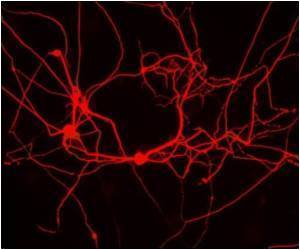Cerebral cortex contains two major types of neurons: interneurons that are inhibitory and principal neurons that are excitatory, all interconnected within the same network.

The new research finds that VIP interneurons, when activated, release principal cells from inhibition, thus boosting their responses. This provides an additional layer of control over cortical processing, much like a dimmer switch can fine-tune light levels.
The discovery was made by a team of neuroscientists at Cold Spring Harbor Laboratory (CSHL) led by Associate Professor Adam Kepecs, Ph.D. Their research, published online today in Nature, shows that neurons expressing vasoactive intestinal polypeptide, or VIP, provide disinhibition in the auditory cortex and the medial prefrontal cortex.
The researchers used molecular tagging techniques developed by team member Z. Josh Huang, a CSHL Professor, to single out VIP-expressing neurons in the vast diversity of cortical neurons. This enabled Kepecs' group, led by postdocs Hyun Jae Pi and Balazs Hangya, to employ advanced optogenetic techniques using color-coded laser light to specifically activate VIP neurons. The activity of the cells was monitored via electrophysiological recordings in behaving animals to study their function, and in vitro to probe their circuit properties.
These VIP neurons are long sought "disinhibitory" cells: they inhibit other classes of inhibitory neurons; but they do not directly cause excitation to occur in brain. Dr. Kepecs and colleagues propose that the disinhibitory control mediated by VIP neurons represents a fundamental "motif" in cerebral cortex.
The difference between neural excitation and disinhibition is akin to the difference between hitting the gas pedal and taking your foot off the breaks. Cells that specialize in releasing the brakes, Dr. Kepecs explains, provide the means for balancing between excitation and inhibition. Kepecs calls this function "gain modulation," which brings to mind the fine control that a dimmer switch provides.
Advertisement
"Linking specific neuronal types to well-defined behaviors has proved extremely difficult," says Kepecs. These results, he says, potentially link the circuit-function of VIP neurons in gain control to an important behavioral function: learning.
Advertisement










